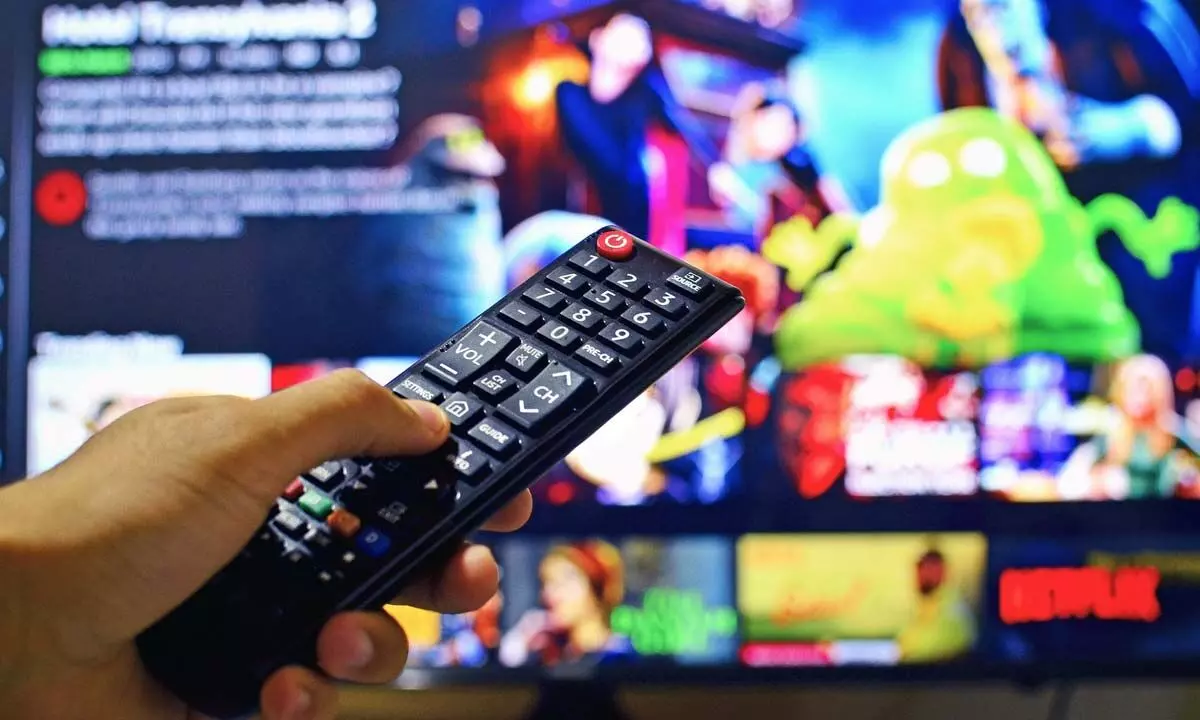Your Smart TV Is Slowing Wi-Fi—Here’s How to Fix It Fast
Smart TVs use Wi-Fi even when idle, slowing your internet. Learn 5 simple ways to stop hidden data use and improve your home network speed fast.
image for illustrative purpose

Smart TVs remain connected to the internet around the clock, often consuming bandwidth in the background even when switched off or not in use. Many users are unaware that these devices can silently affect internet performance by streaming, syncing, and updating continuously.
Smart TVs typically maintain persistent connections for system updates, content syncing, and third-party data sharing. Features like auto-playing previews on home screens or apps updating in the background contribute to unexpected data consumption. Even when turned off, certain models remain online, refreshing app content and communicating with servers.
For households with limited data plans or multiple connected devices, this hidden background activity can lead to noticeable slowdowns. Users often experience lag during video calls or streaming, unaware that a smart TV in another room may be actively using bandwidth.
A common scenario illustrates this problem. A user on a work video call faces frequent freezes despite no visible internet use. Later, it is discovered that the nearby TV was playing high-definition previews silently on the home screen. In other cases, data caps may be exceeded unexpectedly due to silent syncing and updates.
Many of these data-draining features are enabled by default and buried within settings menus that are rarely accessed.
Five Ways to Reduce Smart TV Data Usage Without Turning It Off:
1. Disable Auto-Play on Streaming Apps:
Streaming platforms like Netflix and Prime Video automatically play previews or next episodes. Disabling this in app settings prevents these high-bandwidth videos from running without user action.
2. Turn Off Automatic Software Updates:
Smart TVs perform software updates without notification. Users can navigate to system settings and switch to manual updates to prevent unnecessary background data use.
3. Activate Data Saver or Idle Modes:
Manufacturers like Samsung and LG include settings such as low-power or data-saver modes. Enabling these features reduces data consumption when the TV is idle.
4. Disconnect Wi-Fi During Inactivity:
Users can manually disconnect the TV from the internet when it is not needed, rather than switching the device off. This can be done through network settings without unplugging the unit.
5. Limit Bandwidth Through Router Settings:
Routers with Quality of Service (QoS) or parental controls can restrict bandwidth for specific devices. Allocating limited bandwidth or scheduling access times ensures the TV does not interfere with essential tasks like video conferencing or online gaming.
Adopting these changes gives users more control over their internet performance without needing to disconnect the TV permanently. In homes with many connected devices, managing smart TV settings can lead to a more stable and efficient network experience.

